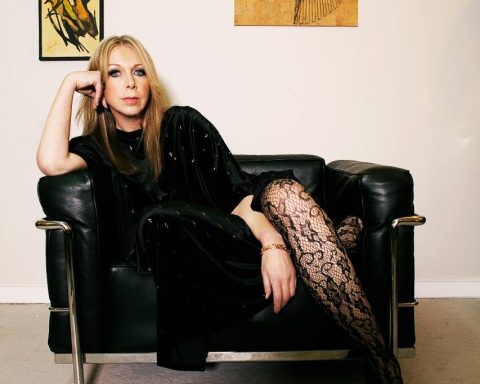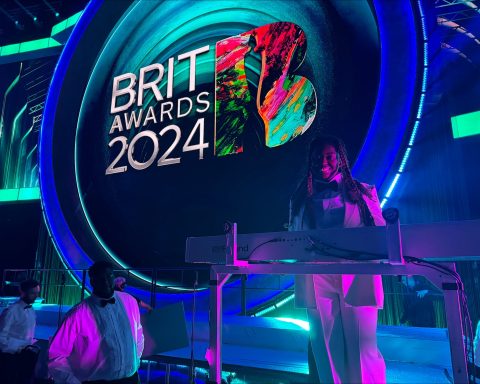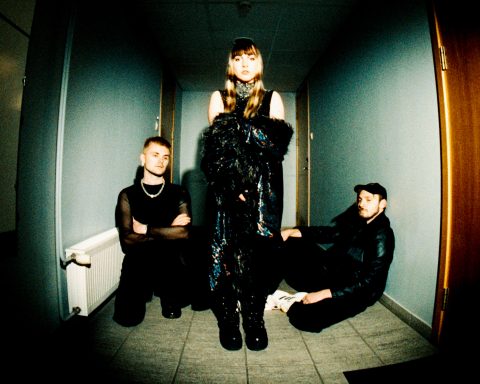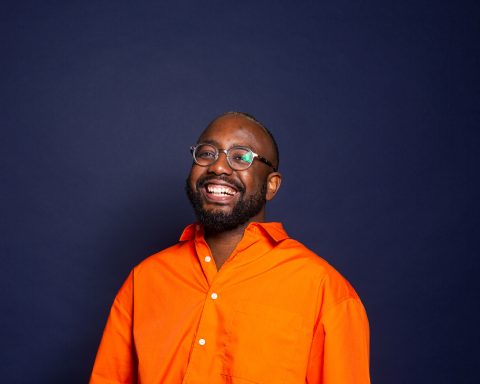When Sri Lankan artist M.I.A. brought her People vs. Money tour to Denver, Colorado’s Fillmore Auditorium in 2008, she was there touting her blend of experimental hip-hop and electronic world music. But she likely didn’t expect her opener, Egyptian Lover, to steal the show. Armed with his Roland TR-808, the Los Angeles electro hip-hop pioneer blasted b-boy classics such as “Egypt, Egypt” and “Freakaholic,” while carefully-placed Marshall stacks handled the massive sound of the booming bass. For the young audience, it was love at first beat.
An Expanding Influence
The one-offs he did with M.I.A. were integral at the time, exposing the now 57-year-old to a brand-new audience, widening his fanbase. “They take right to it,” he says. “They love the beats, they love that sound. And when they hear that 808 live, wherever I perform—you can’t hear that song anywhere else but live. It just sounds so different. And they’re like, ‘Wow, this is great.’”
Egyptian Lover—born Gregory Broussard—began his love affair with the Roland TR-808 as a teenager. It unequivocally became his muse, much like B.B. King and his ever-faithful guitar Lucille. “When I first found out that there was such thing, I was in high school,” he explains. “I had friends that were musicians, and one of them was a drummer. And I heard ‘It’s Nasty’ by Grandmaster Flash. I was like, ‘How did the drummer do that?’ He said, ‘I don’t know.'”
“They love the beats, they love that sound. When they hear that 808 live, wherever I perform—you can't get that anywhere else but live."
808 Analysis
Broussard tried to dissect what he was hearing. “I remember thinking, ‘They must have two kick drums, and they’re hitting them back and forth.’ We didn’t know there was such a thing called a drum machine.” Another classic track further expanded his infatuation. “Then [Afrika Bambaataa’s] ‘Planet Rock’ came out and I said, ‘Wow, I love that drum sound. How did…?’ He said, ‘I don’t know man. They must’ve detuned it.’ We were still thinking it was a real drum set.”
He then met Rock Steady Crew DJ Afrika Islam, who helped compose the bulk of the Soul Sonic Force catalog. From him, Egyptian Lover learned “Planet Rock” was partially crafted using a Roland TR-808 found in a Village Voice advert for $20 a session. Fascinated by the boundless possibilities, Egyptian Lover asked Afrika Islam to take him to the nearest Guitar Center. There, he set his eyes on the holy grail of drum machines. In 1981, the Roland TR-808 still carried a hefty price tag of about $1,200, and Egyptian Lover only had $600 at the time.

Portrait of the Rapper as a Young Man
The 18-year-old ran home and said, “‘Mom, I need $600 more. I got to buy this drum machine.” She replied, “‘What? A machine?’” He then explained to her it makes the drum sounds. She gave it to me and said, ‘Well, I bought your brother a saxophone, so I guess I can give you $600 to buy a drum machine.’”
Two weeks later, Egyptian Lover found himself staring down an audience of 10,000 party people at the L.A. Sports Arena. He played “Planet Rock” on his own Roland TR-808.
“I was scared they were going to stop dancing and start fighting because it was just a drum machine—not a record. But nobody stopped dancing. Actually, people started dancing even harder. I broke it down without the cowbell, without the high hat, then brought the cowbell back in, hi-hat, and the rim shot. Then I changed the beat, and everybody freaked out.”
"I broke it down without the cowbell, without the high hat, then brought the cowbell back in, hi-hat, and the rim shot. Then I changed the beat, and everybody freaked out."
Success Arrives
In 1983, Egyptian Lover produced the soundtrack for Breakin’ ‘n’ Enterin’. The documentary focused on L.A.’s burgeoning hip-hop electro scene. It starred gangsta rap legend Ice-T, Kid Frost, and the late b-boy Adolfo Quinones, better known as Shabba-Doo of The Original Lockers. His career was now off and running, and his debut solo album, On The Nile, arrived a year later. Although it peaked at No. 146 on the Billboard pop chart and No. 44 on the R&B chart, it firmly put him on the map.
Soon, local L.A. radio station KDAY started playing “Egypt, Egypt” “every hour on the hour,” and he was fielding show offers from promotors left and right. After touring the world with the voracity of a hungry linebacker, Egyptian Lover went on to release seven more albums.
Analog Heaven
Eventually, Egyptian Lover went on hiatus in 1998 shortly after the release of Get Into It. While he briefly returned in 2006 with Platinum Pyramids, it would be nearly a decade before he would reemerge with 1984. The release was a sonic throwback to his glory days.
Continuing his tradition of using all analog equipment like the Roland TR-808, he utilized much of the same gear as on his ’80s recordings. “I’ve actually tried to keep it old sounding, tried to keep it analog,” he explains. “I go back to the same studios I did back in 1984 like Skip Saylor, Encore, and Rusk. I don’t use any of the plug-ins. I try to use real keyboards, the real vocoder, and the real 808 to keep it as old-sounding as possible.”
"I’ve tried to keep it analog. I try to use real keyboards, the real vocoder, and the real 808 to keep it as old-sounding as possible."

But it wasn’t cheap. Egyptian Lover spent over $80,000 to do the record. However, with subsequent releases—the aptly titled 1985 and 1986—he and keyboard player Brian Ellis figured out how to keep the costs lower.
“It was a lot of money, but I had to get it right,” he says. “We probably made 30 tracks until we said, ‘OK, these 12 are it.’ The more Brian and I worked, the more we started understanding each other, what I like and how to do it. It was a learning process for us. It only took us half that or even a third of that to make 1985 and a third of that to make 1986. We were on it then.”
"I told myself I want to sound the same as my first album all the way to my last."
Past Meets the Future
And to think, it all started with 1950s crooner Dean Martin, who influenced Egyptian Lover to remain true to his original sound.
“My dad had a collection of albums, and I remember grabbing a Dean Martin album, and I loved his voice,” he recalls. “I put on another one of his albums and said, ‘Wow, this sounds the same. Is this him?’ Then, I put on another and thought, ‘It sounds the same. Is this him?’ I told myself if ever did something like that I want to sound the same as my first album all the way to my last.”
Egyptian Lover has certainly reached his childhood goal. Without the Roland TR-808, “What Is A D.J. If He Can’t Scratch,” “Poppers Anthem,” and “The World Keeps Turning” (featuring fellow pioneers Newcleus) wouldn’t exist. When asked what he’d do if someone stole his beloved 808, he replies with a laugh, “I got six more.”







